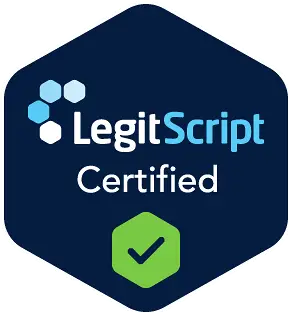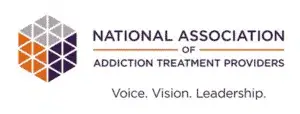Key Takeaways
- Detoxification from fentanyl is complex due to its potency and the severe withdrawal symptoms it can cause.
- Medical detox is essential for managing withdrawal and is the first step towards long-term recovery from fentanyl addiction.
- Fentanyl medical detox centers employ an array of treatments to help patients, including medications, therapy, and holistic healthcare strategies.
- Some of the most common medications used in fentanyl detox include methadone, buprenorphine, and naltrexone, as well as over-the-counter pain relievers and anti-nausea medications.
- The timeline for fentanyl medical detox varies, but withdrawal symptoms usually begin within hours of cessation and last for 7 to 14 days. .
Unlike those struggling with other forms of substance use disorder (SUD), individuals who are addicted to fentanyl must seek medical assistance when trying to stop using the drug. However, with proper medical supervision, counseling, and support, many people have managed to escape fentanyl addictions and return to a healthy, sober lifestyle.
We’ll explain how fentanyl medical detox works below.
Reasons That Medical Detox is Essential for Fentanyl Addiction
There are several key reasons why fentanyl requires medical detox, including:
- Fentanyl Is Very Potent: Fentanyl is approximately 50 to 100 times more potent than morphine, making it extremely dangerous. Its high potency increases the risk of overdose and makes withdrawal symptoms particularly severe.The drug is also unpredictable, complicating detox efforts.
- Fentanyl Causes Severe Withdrawal Symptoms: Fentanyl withdrawal symptoms can be intense and include muscle aches, vomiting, diarrhea, fever, insomnia, anxiety, depression, irritability, and agitation. Without medical assistance, these symptoms can increase the risk of relapse.
- Risks of Relapse and Overdose: Attempting to detox from fentanyl without medical supervision significantly increases the risk of relapse. Relapse can be particularly dangerous because tolerance drops rapidly during detox, making overdose more likely if the person returns to drug use.
- The Possibility of Complications: Severe dehydration, electrolyte imbalances, and other health complications can occur without proper medical care, posing serious risks to an individual’s health.
What Happens at a Fentanyl Medical Detox Center?
Medical detox centers play a vital role in the treatment of fentanyl addiction by providing comprehensive care and support tailored to the unique challenges posed by this potent opioid.
This Season, Give Yourself the Gift of a Fresh Start.
Whether you are struggling with addiction, mental health or both, our expert team is here to guide you every step of the way. Don’t wait— reach out today to take the first step toward taking control of your life.
Some of the strategies and tactics detox centers employ include:
- Medical Assessment and Individualized Treatment Plans: In addition to a comprehensive medical evaluation, patients will receive a treatment plan tailored to their unique circumstances, ensuring that the detox process addresses all aspects of their addiction and health.
- Medication-Assisted Treatment (MAT): Healthcare providers may prescribe a number of different medications that can help ease the symptoms of withdrawal, keep the patient safe, and provide the most comfort possible.
- Therapeutic Interventions: A variety of approaches, including individual therapy, group therapy, and family therapy may be used to help an individual cope with existing mental health problems and develop coping strategies for a sustained recovery.
- Mindfulness and Meditation: Practices such as mindfulness meditation help individuals manage stress and emotional challenges during detox and recovery.
- Exercise and Nutrition: Physical activity and proper nutrition are encouraged to support overall well-being and promote healing.
- Aftercare Planning: Detox centers develop aftercare plans that include ongoing therapy, support groups, and outpatient treatment to support long-term recovery.
- Relapse Prevention Strategies: Individuals learn techniques for identifying triggers, managing cravings, and developing effective coping mechanisms to prevent relapse.
- Support Networks: Building support networks, including family, friends, and community resources, is emphasized to provide ongoing encouragement and accountability
What Medications Are Used in Fentanyl Medical Detox?
The use of medications during fentanyl detox is crucial for managing withdrawal symptoms, reducing cravings, and ensuring a safer and more comfortable transition to sobriety. Some of the medications commonly used in fentanyl medical detox include:
- Methadone: Methadone is a long-acting opioid agonist that binds to the same receptors in the brain as fentanyl. It helps alleviate withdrawal symptoms and cravings without producing the euphoric effects associated with fentanyl. It works by stabilizing the brain’s chemistry and gradually reduces dependence on opioids. It provides a controlled tapering process that minimizes withdrawal symptoms and decreases the risk of relapse.
- Buprenorphine (Suboxone, Subutex): Buprenorphine is a partial opioid agonist that also targets the same brain receptors as fentanyl. Suboxone is a combination of buprenorphine and naloxone, while Subutex contains buprenorphine alone. Buprenorphine provides relief from withdrawal symptoms and cravings with a “ceiling effect,” which reduces the risk of misuse and overdose. Naloxone in Suboxone acts as an abuse deterrent, preventing misuse by causing withdrawal symptoms if injected.
- Naltrexone: Naltrexone is an opioid antagonist that blocks the effects of opioids by binding to opioid receptors without activating them. It is typically used after detoxification to support long-term recovery. By preventing opioids from binding to their receptors, naltrexone eliminates the euphoric effects and reduces cravings. It is available in oral and extended-release injectable forms.
- Clonidine: Clonidine is an alpha-2 adrenergic agonist that is primarily used to treat high blood pressure but is also effective in managing certain opioid withdrawal symptoms. It helps reduce some of the physical symptoms of withdrawal, such as sweating, anxiety, agitation, muscle aches, and high blood pressure, by affecting the part of the brain that regulates autonomic nervous system activity.
- Lofexidine: Lofexidine is an alpha-2 adrenergic receptor agonist specifically approved for managing opioid withdrawal symptoms. It is similar to clonidine but designed specifically for opioid withdrawal. By reducing the release of norepinephrine, lofexidine alleviates withdrawal symptoms such as anxiety, agitation, muscle aches, and insomnia.
- Gabapentin: Gabapentin is an anticonvulsant medication often used off-label to manage certain withdrawal symptoms associated with opioid detox. Gabapentin helps alleviate symptoms like anxiety, insomnia, and muscle pain by affecting neurotransmitter activity in the brain.
- Acetaminophen/Ibuprofen: Over-the-counter pain relievers such as acetaminophen (Tylenol) and ibuprofen (Advil, Motrin) are commonly used to manage mild to moderate pain and discomfort during opioid withdrawal. These medications help reduce fever, muscle aches, and general pain associated with withdrawal by inhibiting the production of prostaglandins, which contribute to inflammation and pain.
- Anti-Nausea Medications (Ondansetron, Promethazine): Medications such as ondansetron (Zofran) and promethazine (Phenergan) are used to alleviate nausea and vomiting during opioid detox. These medications block specific receptors in the brain that trigger nausea and vomiting, providing relief from gastrointestinal symptoms.
What Is the Timeline for Fentanyl Medical Detox?
The timeline for fentanyl withdrawal can vary based on factors such as the individual’s level of dependence, duration of use, and overall health. However, a general timeline is as follows:
- Early Symptoms (6 to 12 Hours After Last Dose): Initial withdrawal symptoms may begin to appear, including anxiety, restlessness, and muscle aches.
- Peak Symptoms (1 to 3 Days After Last Dose): Withdrawal symptoms typically peak during this period, with severe physical and psychological symptoms. This phase can be particularly challenging and requires medical support.
- Gradually Easing Symptoms (4 to 7 Days After Last Dose): Symptoms gradually start to improve, but some physical symptoms and cravings may persist. Psychological symptoms like depression and anxiety may linger.
- Post-Acute Withdrawal (1 to 2 Weeks After Last Dose): Some individuals experience post-acute withdrawal symptoms (PAWS), which may include mood swings, sleep disturbances, and persistent cravings. Ongoing medical and therapeutic support is crucial during this phase.
Get Help for Drug and Alcohol Addiction Now
There are quite a few different options for people who are seeking treatment for drug & alcohol addiction. Your individualized treatment plan at The Recovery Village Palmer Lake may include:
- Medical detox: Patients detox from substances in a clinical environment where doctors monitor health and provide medications to ease withdrawal symptoms.
- Inpatient treatment: Patients in inpatient treatment live at our facility and attend a full schedule of individual and group therapy, counseling and peer support sessions.
- Partial hospitalization program (PHP): PHPs provide patients with additional flexibility and independence than inpatient programs.
- Intensive outpatient program (IOP): IOPs help patients transition to life outside of rehab, with fewer hours of care and more time building skills and habits for recovery.
- Outpatient treatment: Outpatient care provides ongoing treatment after an inpatient stay and supports clients as they transition back into their daily lives.
- Aftercare: Aftercare programs help support long-term recovery through clinical and medical recommendations for follow-up care, relapse prevention plans and more.
If you or someone you love is struggling with drug or alcohol addiction, help is available. The Recovery Village Palmer Lake is here to support you throughout the entire recovery process. It’s time to get your life back. Call our Recovery Advocates today.








